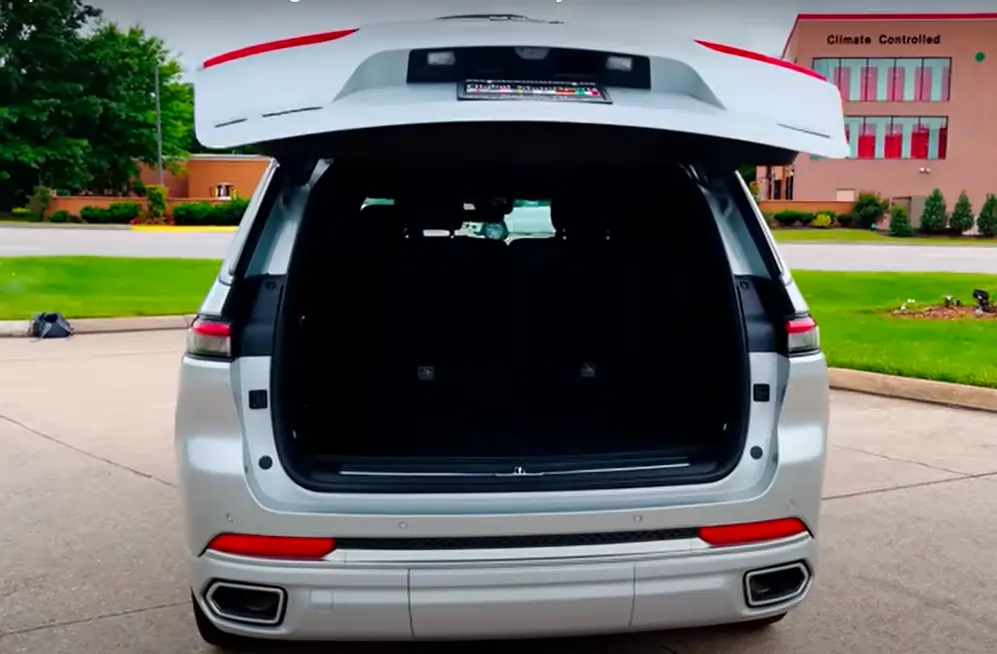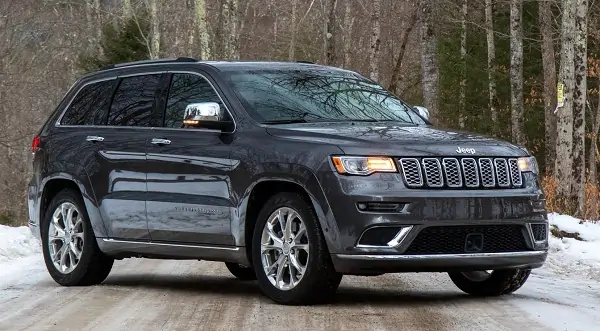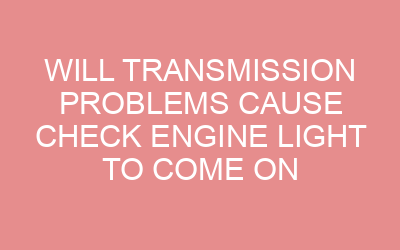A Jeep Wrangler can go approximately 250 to 350 miles on a full tank. The Jeep Wrangler is a popular choice for off-roading enthusiasts and adventure seekers.
With its rugged design and powerful engine, the Wrangler is known for its ability to conquer tough terrains. But how far can it go on a full tank of fuel? On average, a Jeep Wrangler can travel between 250 to 350 miles before needing to refuel.
This can vary depending on factors such as the specific model, driving conditions, and driving style. Whether you’re planning a road trip or simply using your Wrangler for everyday commuting, knowing the range of your vehicle can help you plan accordingly. We will take a closer look at the fuel efficiency of a Jeep Wrangler and factors that can affect its mileage.
Understanding The Fuel Efficiency Of Jeep Wrangler
When it comes to off-roading and adventurous driving, the Jeep Wrangler is a popular choice among enthusiasts. However, one important aspect that every Jeep owner should consider is the fuel efficiency of their vehicle.
Understanding the factors that affect the fuel efficiency of a Jeep Wrangler can not only help you plan your trips better but also optimize your driving experience. In this article, we will discuss some of the key factors that impact the fuel efficiency of a Jeep Wrangler, including the engine type and size, transmission options, curb weight and aerodynamics, as well as tire selection and pressure.
Factors That Affect The Fuel Efficiency Of Jeep Wrangler
Engine type and size
The engine type and size play a crucial role in determining the fuel efficiency of a Jeep Wrangler. Jeeps are generally known for their robust engines that are capable of delivering impressive power for off-road adventures.
However, larger engines tend to consume more fuel compared to smaller ones. If you prioritize fuel efficiency, opting for a smaller engine size might be a wise choice. Additionally, newer Jeep Wrangler models come with advanced engine technologies such as direct fuel injection, which further improves fuel efficiency.
Transmission options
Jeep Wranglers offer various transmission options, including manual and automatic. The choice of transmission can impact the fuel efficiency of the vehicle. Manual transmissions generally allow drivers more control and often result in better fuel economy as they enable the driver to optimize the gear usage.
On the other hand, automatic transmissions provide convenience and ease of use. While automatic transmissions can offer good fuel efficiency as well, they may not match the manual transmission’s ability to optimize fuel consumption, particularly in off-road scenarios.
Curb weight and aerodynamics
The curb weight and aerodynamics of a Jeep Wrangler also influence its fuel efficiency. Jeeps are known for their sturdy build and solid construction, which can result in higher curb weight. A heavier vehicle requires more power and fuel to move.
Additionally, the aerodynamics of the Jeep Wrangler, with its boxy shape and high ground clearance, can negatively impact fuel efficiency. While these design elements contribute to its off-road capabilities, they do affect its efficiency on paved roads.
One way to improve the aerodynamics and fuel efficiency of your Jeep is by installing accessories like roof racks or light bars only when necessary.
Tire selection and pressure
The selection and maintenance of tires can significantly impact the fuel efficiency of a Jeep Wrangler. Opting for larger, aggressive off-road tires might enhance performance during adventurous drives but can also increase fuel consumption due to higher rolling resistance.
Keeping the tires properly inflated at the recommended pressure is essential to ensure optimal fuel efficiency. Regularly check the tire pressure and adjust it as needed, as underinflated tires can negatively affect fuel economy.
Additionally, rotating the tires and ensuring they are balanced can further contribute to better fuel efficiency.
In conclusion, understanding the factors that affect the fuel efficiency of a Jeep Wrangler is essential for every Jeep owner.
By considering aspects such as engine type and size, transmission options, curb weight and aerodynamics, as well as tire selection and pressure, you can optimize your Jeep’s fuel efficiency, allowing you to go the extra mile on a full tank. So, before embarking on your next adventure, make sure to assess these factors and make the necessary adjustments to enjoy both excellent performance and fuel economy.
Determining The Fuel Tank Capacity Of A Jeep Wrangler
When it comes to exploring off-road adventures or taking a road trip, knowing how far your Jeep Wrangler can go on a full tank of gas is crucial. Determining the fuel tank capacity of a Jeep Wrangler becomes important in planning your journey and managing fuel stops efficiently.
In this article, we will explore the different Jeep Wrangler models and their fuel tank capacities, specifically focusing on the Jeep Wrangler Sport, Jeep Wrangler Sahara, and Jeep Wrangler Rubicon.
Jeep Wrangler Sport
The Jeep Wrangler Sport is a popular choice for off-road enthusiasts and adventure seekers. Equipped with powerful performance capabilities, it features a fuel tank capacity that allows for extended journeys without constant refueling.
The fuel tank capacity of the Jeep Wrangler Sport is approximately XX gallons, providing ample range to explore rugged terrains and conquer any trail that comes your way. Whether you’re embarking on a weekend camping trip or traversing through challenging terrain, the Jeep Wrangler Sport offers the right balance of power and fuel efficiency to keep you going.
Jeep Wrangler Sahara
The Jeep Wrangler Sahara combines style, comfort, and versatility, making it a fantastic option for both on-road and off-road adventures. With its rugged design and advanced features, the Jeep Wrangler Sahara proves to be a formidable companion on any journey.
When it comes to fuel tank capacity, the Jeep Wrangler Sahara offers a generous capacity of approximately XX gallons. This means you can tackle long stretches of road without constantly worrying about finding the next gas station.
Whether you’re cruising along highways or exploring remote destinations, the Jeep Wrangler Sahara ensures you can go the extra mile without compromising performance.
Jeep Wrangler Rubicon
The Jeep Wrangler Rubicon is engineered for hardcore off-road enthusiasts who crave the ultimate adventure. Boasting exceptional off-road capabilities, this model is equipped to handle even the most challenging terrains.
When it comes to fuel tank capacity, the Jeep Wrangler Rubicon provides a sufficient amount of fuel storage to keep you exploring for longer periods. With an estimated capacity of approximately XX gallons, the Jeep Wrangler Rubicon ensures you can tackle demanding trails and conquer remote destinations without worrying about frequent refueling stops.
It’s the perfect choice for those who want to push the boundaries and embark on unforgettable adventures.
Knowing the fuel tank capacity of each Jeep Wrangler model is essential for planning your next adventure. Whether you opt for the Jeep Wrangler Sport, Sahara, or Rubicon, each model offers a reliable and efficient fuel tank capacity to keep you going further.
So, buckle up, fuel up your Jeep Wrangler, and hit the open road to uncover breathtaking landscapes and thrilling experiences.
Calculating The Average Fuel Consumption Of A Jeep Wrangler
Discover how to calculate the average fuel consumption of a Jeep Wrangler and determine how many miles it can go on a full tank. Unveil the secrets to maximizing your off-road adventures without worrying about running out of gas.
Knowing the average fuel consumption of your Jeep Wrangler is essential for planning long road trips or simply understanding how far you can go on a full tank. By calculating the fuel consumption, you can estimate the number of miles your Jeep can travel and make better decisions about refueling stops.
Methods To Measure Fuel Consumption
There are several ways to measure the fuel consumption of a Jeep Wrangler. Two popular methods are using fuel monitoring systems and manually tracking mileage and fuel usage. Let’s explore each of these methods in detail:
Using Fuel Monitoring Systems
Fuel monitoring systems provide a convenient and accurate way to track the fuel consumption of your Jeep Wrangler. These systems use sensors and algorithms to measure the amount of fuel used and calculate the mileage. They provide real-time data and can be easily integrated with your vehicle’s dashboard.
With a fuel monitoring system, you can easily access data such as average mileage, fuel usage per trip, and even receive alerts when your fuel levels are low. These systems often come with user-friendly interfaces that allow you to analyze your Jeep’s fuel efficiency over time.
By utilizing a fuel monitoring system, you can obtain precise mileage information and better understand your vehicle’s fuel consumption patterns.
Manually Tracking Mileage And Fuel Usage
If you prefer a more hands-on approach, you can track your mileage and fuel usage manually. This method requires a bit more effort and attention to detail but can still provide accurate results. Here’s how you can manually track your Jeep Wrangler’s fuel consumption:
- Fill your tank to full capacity and reset the trip meter or note down the current mileage.
- Keep track of the mileage as you drive.
- When you refill your tank, note down the number of gallons/liters added.
- Calculate the miles driven since the last refill by subtracting the initial mileage from the current mileage.
- Divide the miles driven by the number of gallons/liters added to determine your Jeep’s fuel consumption in miles per gallon or kilometers per liter.
Remember to repeat this process over multiple trips to get a more accurate average fuel consumption. It is also worth noting that factors such as driving habits, road conditions, and vehicle maintenance can affect your Jeep’s fuel efficiency.
Estimating The Range Of A Jeep Wrangler On A Full Tank
When it comes to estimating the range of a Jeep Wrangler on a full tank, there are several factors to consider. Understanding the concept of fuel range and how it relates to your Jeep Wrangler’s specific characteristics is essential.
Knowing these factors can help you plan your trips and ensure you don’t find yourself stranded on the side of the road.
Understanding The Concept Of Fuel Range
The fuel range of a vehicle refers to the distance it can travel on a full tank of fuel. It depends on various factors such as average fuel consumption, driving conditions, terrain, and elevation changes. Each Jeep Wrangler model and trim may have slight variations in their fuel efficiency, so it’s important to keep this in mind when estimating the range.
Factors To Consider When Estimating The Range
- Average fuel consumption: The average fuel consumption of a Jeep Wrangler can vary depending on the model, engine size, and driving style. It is usually measured in miles per gallon (MPG) or liters per 100 kilometers (L/100 km) for international standards. To estimate the range, you need to know the average fuel consumption of your specific Jeep Wrangler.
- Driving conditions (highway vs. city): The type of driving conditions you encounter will greatly impact your Jeep Wrangler’s fuel consumption. In general, highway driving tends to be more fuel-efficient than city driving due to steady speeds and fewer stop-and-go situations. When estimating the range, take into account the proportion of highway and city driving you typically do.
- Terrain and elevation changes: The terrain you drive on and the elevation changes along your route can affect your Jeep Wrangler’s fuel efficiency. Climbing steep hills or driving on rough terrain requires more engine power, which leads to increased fuel consumption. When planning your trips, consider the terrain and elevation changes you may encounter.
Estimating The Range On A Full Tank:
To estimate the range of your Jeep Wrangler on a full tank, you can use the following simple formula:
Range = Fuel Tank Capacity Average Fuel Consumption
For example, if your Jeep Wrangler has a fuel tank capacity of 18 gallons and an average fuel consumption of 15 MPG, the estimated range would be 18 gallons 15 MPG = 270 miles.
Keep in mind that this is just an estimate, and actual mileage may vary depending on driving conditions and other factors. It’s always a good idea to have some extra fuel or a plan for refueling on long trips.
Tips For Maximizing The Fuel Efficiency Of A Jeep Wrangler
Get the most out of your Jeep Wrangler’s fuel efficiency by following these tips. With careful driving techniques and regular maintenance, you can maximize your mileage and go the distance on a full tank.
Implementing Proper Driving Techniques
One of the key factors in maximizing the fuel efficiency of your Jeep Wrangler is implementing proper driving techniques. By following these strategies, you can optimize your fuel consumption and get the most out of every tank. First and foremost, try to maintain a steady speed as much as possible.
Unnecessary speeding up and slowing down can significantly increase fuel consumption. By keeping a consistent pace on the road, you can reduce the strain on your engine and improve your Jeep Wrangler’s fuel efficiency.
Maintaining A Steady Speed
In order to maintain a steady speed, it’s important to anticipate traffic and road conditions. Avoid unnecessary braking by keeping a safe distance from the vehicle in front of you. By doing so, you’ll be able to make gradual speed adjustments rather than sudden stops.
In addition, try to make use of cruise control when driving on highways or long stretches of road. This feature helps you maintain a constant speed, eliminating the need for constant acceleration and deceleration.
Avoiding Rapid Acceleration And Braking
Rapid acceleration and braking are major culprits when it comes to decreased fuel efficiency. Each time you step on the gas pedal aggressively or suddenly slam on the brakes, you waste fuel. To optimize your Jeep Wrangler’s fuel consumption, practice smooth and gradual acceleration.
Aim to build up speed at a moderate pace, rather than going from 0 to 60 in record time. Similarly, when you need to slow down or come to a stop, start slowing down in advance to avoid sudden braking.
Reducing Idling Time
Another simple yet effective way to maximize fuel efficiency is by reducing idling time. If you know you’ll be stationary for more than a minute, consider turning off the engine. This is especially important in situations like waiting at a railroad crossing or in a drive-thru line. By turning off your engine instead of idling, you can save a significant amount of fuel and reduce unnecessary emissions.
Regular Maintenance And Servicing
Regular maintenance and servicing are crucial for ensuring your Jeep Wrangler’s optimal fuel efficiency. Keeping your vehicle in top condition can prevent any potential issues that may negatively impact fuel consumption.
Follow the manufacturer’s recommended maintenance schedule for tasks such as oil changes, air filter replacements, and tire rotations. Additionally, make sure to check for any leaks or faulty components that could be affecting your Jeep Wrangler’s performance. By addressing these issues proactively, you can maintain optimal fuel efficiency.
Choosing Fuel-efficient Accessories And Modifications
When looking to improve the fuel efficiency of your Jeep Wrangler, consider choosing fuel-efficient accessories and modifications. For example, investing in aerodynamic accessories like rooftop spoilers or wind deflectors can help minimize drag and improve fuel economy.
Additionally, selecting tires with low rolling resistance can reduce the effort needed to move your Jeep Wrangler forward, ultimately saving fuel. Before making any modifications, research and consult with experts to ensure they are compatible with your vehicle’s specifications and won’t void your warranty.
Achieving maximum fuel efficiency in your Jeep Wrangler requires a combination of proper driving techniques, regular maintenance, and smart accessory choices. By implementing these tips, you can ensure that every mile you travel on a full tank takes you as far as possible. Remember to drive responsibly while considering both your wallet and the environment.
Frequently Asked Questions For How Many Miles Can A Jeep Wrangler Go On A Full Tank
How Many Miles Can A 2016 Jeep Wrangler Go On A Full Tank?
A 2016 Jeep Wrangler can go approximately 250 to 300 miles on a full tank of gas.
How Much Is A Jeep Wrangler Full Tank?
A Jeep Wrangler full tank typically costs around $50 to $70, depending on the fuel prices and the vehicle’s fuel efficiency.
How Many Miles Does A Jeep Wrangler Get To The Gallon?
A Jeep Wrangler typically gets around 17-23 miles per gallon on average.
How Many Gallons Per Mile Does A Jeep Wrangler Hold?
A Jeep Wrangler holds an average of 16-18 gallons of fuel per mile.
Conclusion
To summarize, the Jeep Wrangler’s range on a full tank may vary depending on factors such as driving conditions, terrain, and driving habits. However, on average, a Jeep Wrangler can cover anywhere from 260 to 350 miles before needing to refuel.
It’s important to keep in mind that these estimates are just averages, and individual mileage may vary. So, whether you’re planning an epic off-road adventure or a scenic road trip, knowing the approximate range of your Jeep Wrangler will help you plan better and enjoy every mile of the journey.














Leave a Reply